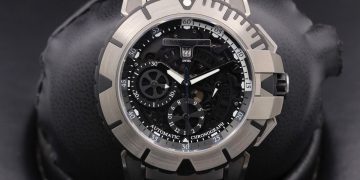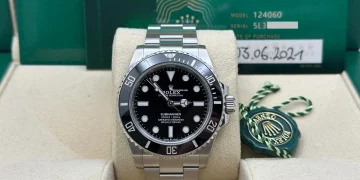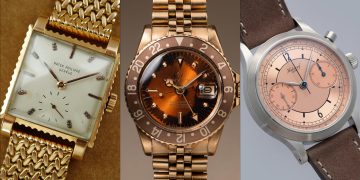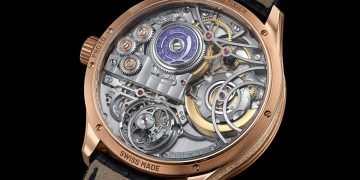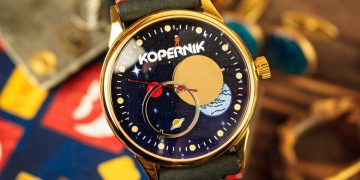Watches, though globally admired for their craftsmanship, often hold different meanings and significance across various cultures. The aesthetic and functional preferences for watches can reveal a lot about a country’s social values, historical context, and even its approach to luxury and status. From minimalist designs to cutting-edge technology, and from traditional craftsmanship to modern innovation, these choices often reflect deeper societal trends, including the importance of time, status, pragmatism, and even sustainability.
This article explores how different countries prioritize certain aspects of watch design and functionality, shedding light on how these preferences serve as cultural expressions of their unique social values.
1. Switzerland: Tradition, Precision, and Heritage
Switzerland is universally acknowledged as the heart of the watchmaking industry. The Swiss watchmaking tradition is built on a foundation of precision, timelessness, and craftsmanship, values that align closely with the country’s long-standing reputation for quality and reliability in all aspects of life.
Aesthetic Preferences: Classic, Elegant, and Timeless
Swiss watch brands like Rolex, Patek Philippe, Audemars Piguet, and Omega emphasize elegant and sophisticated designs. Swiss watches often feature clean, simple dials, luxurious finishes, and enduring styles that transcend trends. These timepieces are designed to withstand the test of time, much like Swiss culture itself, which values tradition, longevity, and permanence.
- Timeless Elegance: In Switzerland, the preference for classic design is deeply ingrained. Watches like the Patek Philippe Calatrava and Vacheron Constantin Patrimony reflect an ethos of understated luxury and refined taste. The belief in investing in heirloom-quality timepieces is reflected in the idea that good things take time—both in craftsmanship and in life.
Functional Preferences: Precision and Craftsmanship
The Swiss are renowned for their meticulous attention to detail, and this extends to the technology and functionality of their watches. Swiss-made timepieces are synonymous with precision and accuracy, attributes that align with the Swiss obsession with order, efficiency, and quality.
- Movement Quality: The emphasis on mechanical excellence, with innovations such as the chronograph and tourbillon, reflects Switzerland’s belief in innovation through tradition. The Swiss have a long history of horological craftsmanship, and their commitment to craftsmanship and complex movements mirrors the country’s values of integrity and mastery.
2. Japan: Minimalism, Technology, and Innovation
Japanese society places high value on functionality, simplicity, and efficiency. The country’s aesthetic and functional preferences in watches often prioritize these traits, reflecting the Japanese ideals of simplicity and attention to detail. Brands like Seiko, Grand Seiko, and Casio embody these values while also incorporating cutting-edge technology.
Aesthetic Preferences: Simplicity, Subtlety, and Precision
Japanese watches often lean towards minimalism and refinement, focusing on clean, clear dials with simple designs. The Grand Seiko brand, for instance, represents elegance without ostentation, with its refined finish, simple designs, and focus on perfection in craftsmanship. Japanese aesthetics, derived from centuries of traditions like Zen and Wabi-Sabi, favor the beauty of simplicity and imperfection.
- Simplicity in Design: The Seiko Presage and Grand Seiko collections demonstrate how Japanese watches focus on functional beauty and understated elegance. The lack of excessive ornamentation and clean lines reflects the cultural importance placed on modesty, restraint, and balance.
Functional Preferences: Technology, Precision, and Durability
Japanese watches are often seen as highly practical and reliable, with a keen focus on durability and technology. Casio, with its famous G-Shock and F91W models, is a prime example of Japan’s functional approach to watchmaking. The G-Shock, known for its ruggedness and shock resistance, caters to the value of practicality and resilience, traits often associated with Japanese work ethic and industriousness.
- Solar Power and Eco-Friendly Features: Japan is also at the forefront of incorporating environmentally friendly technology in its watches, such as solar-powered models by Seiko and Citizen. This aligns with the country’s cultural emphasis on sustainability and environmental consciousness.
3. United States: Status, Innovation, and Functionality
In the United States, the role of watches goes beyond merely telling time—they are tools for self-expression, signaling success, ambition, and a strong individualistic spirit. American watch culture embraces innovation and technology, as well as the desire to reflect status through unique designs. Brands like Apple, Rolex, Tag Heuer, and Michael Kors are representative of these tendencies.
Aesthetic Preferences: Bold, Functional, and Diverse
American consumers often gravitate toward watches that reflect a sense of boldness, power, and individuality. While classic brands like Rolex cater to the high-end status-conscious segment, more affordable luxury options like Michael Kors are popular with the mass affluent, serving as visible symbols of success.
- Smartwatches and Innovation: The launch of the Apple Watch marked a significant cultural shift, aligning with the American obsession with technology, convenience, and individual empowerment. The smartwatch trend reflects the American value of innovation, as well as the desire to combine functionality with style.
Functional Preferences: Technology and Versatility
The United States is also home to a strong interest in multifunctional and durable watches, including smartwatches and hybrid models that offer not just timekeeping, but a range of technological functionalities. American consumers highly value convenience, often preferring watches that allow for seamless integration into their digital lifestyles.
- Functionality in Smartwatches: The Apple Watch is a key example of how American culture has embraced the smartwatch revolution. Its ability to track fitness, receive notifications, and even make payments taps into the American fascination with efficiency, connectedness, and innovation.

4. Germany: Precision, Engineering, and Functionality
Germany is renowned for its emphasis on engineering excellence and precision, and these values are deeply ingrained in the country’s watchmaking culture. Brands like A. Lange & Söhne, Glashütte Original, and Nomos embody these traits, with a strong focus on mechanical complexity, technical innovation, and meticulous craftsmanship.
Aesthetic Preferences: Clean, Functional, and Technical
German watch designs tend to be clean, minimalist, and functional. Watches from brands like Nomos often feature simple dials, refined lines, and a no-nonsense approach to design that reflects the German preference for understatement and clarity. The style of German watches tends to favor logical, technical beauty rather than ornamental excess.
- The Precision Focus: Timepieces from A. Lange & Söhne are revered for their technical complexity and engineering mastery, mirroring Germany’s broader cultural values of precision and attention to detail.
Functional Preferences: Mechanical Complexity and Craftsmanship
German watches are often viewed as symbols of engineering excellence. These timepieces are designed with a strong emphasis on mechanical sophistication and movement innovation. German consumers appreciate functional complexity that pushes the boundaries of watchmaking technology while still retaining a focus on practical use.
- Handcrafted Movements: German watches, particularly from brands like A. Lange & Söhne, are known for their exceptional craftsmanship and intricate mechanical movements, emphasizing the value of meticulous workmanship and technical mastery.
5. China: Emerging Luxury and Symbolic Value
China’s growing interest in luxury watches reflects a society undergoing rapid economic transformation and cultural change. Chinese consumers, particularly the new rich, view watches as symbols of prestige and success, while also showing an increasing interest in the investment potential of watches. The rise of brands like Bulgari, Omega, and Rolex in the Chinese market underscores this trend.
Aesthetic Preferences: Opulence, Status, and Symbolism
In China, the preference for luxury watches often reflects a desire to display wealth, status, and achievement. Gold, diamonds, and intricate designs are highly prized by Chinese consumers, aligning with cultural ideals of prosperity, good fortune, and exclusivity.
- Luxury as a Status Symbol: High-end models from Rolex and Patek Philippe are seen as markers of prestige, signaling success in business and social standing. Luxury watches in China serve as powerful tools for social signaling, much like other luxury goods such as cars, real estate, and fashion.
Functional Preferences: Symbolic Value and Investment Potential
While Chinese consumers still value the functional qualities of watches, there is a growing awareness of their investment value. The practice of purchasing watches for wealth preservation and as assets is increasingly common in China, particularly among the wealthy elite.
- Investment Watches: The Chinese market is witnessing a rise in the purchase of limited-edition and vintage watches, as consumers see them not only as status symbols but as instruments for preserving wealth and generating long-term returns.
Conclusion: Watches as Cultural Mirrors
In conclusion, watches do much more than mark the passage of time—they reflect cultural values, social status, and even economic aspirations. Each country’s approach to watchmaking and watch consumption provides a lens through which we can better understand their societal preferences, whether it’s precision and tradition in Switzerland, minimalism and technology in Japan, or status and investment in China.
As the luxury watch industry continues to evolve, these societal values will likely continue to shape the way people around the world view their timepieces. From innovative designs to complex functionality, watches remain powerful tools for self-expression, investment, and a reflection of cultural identity.



